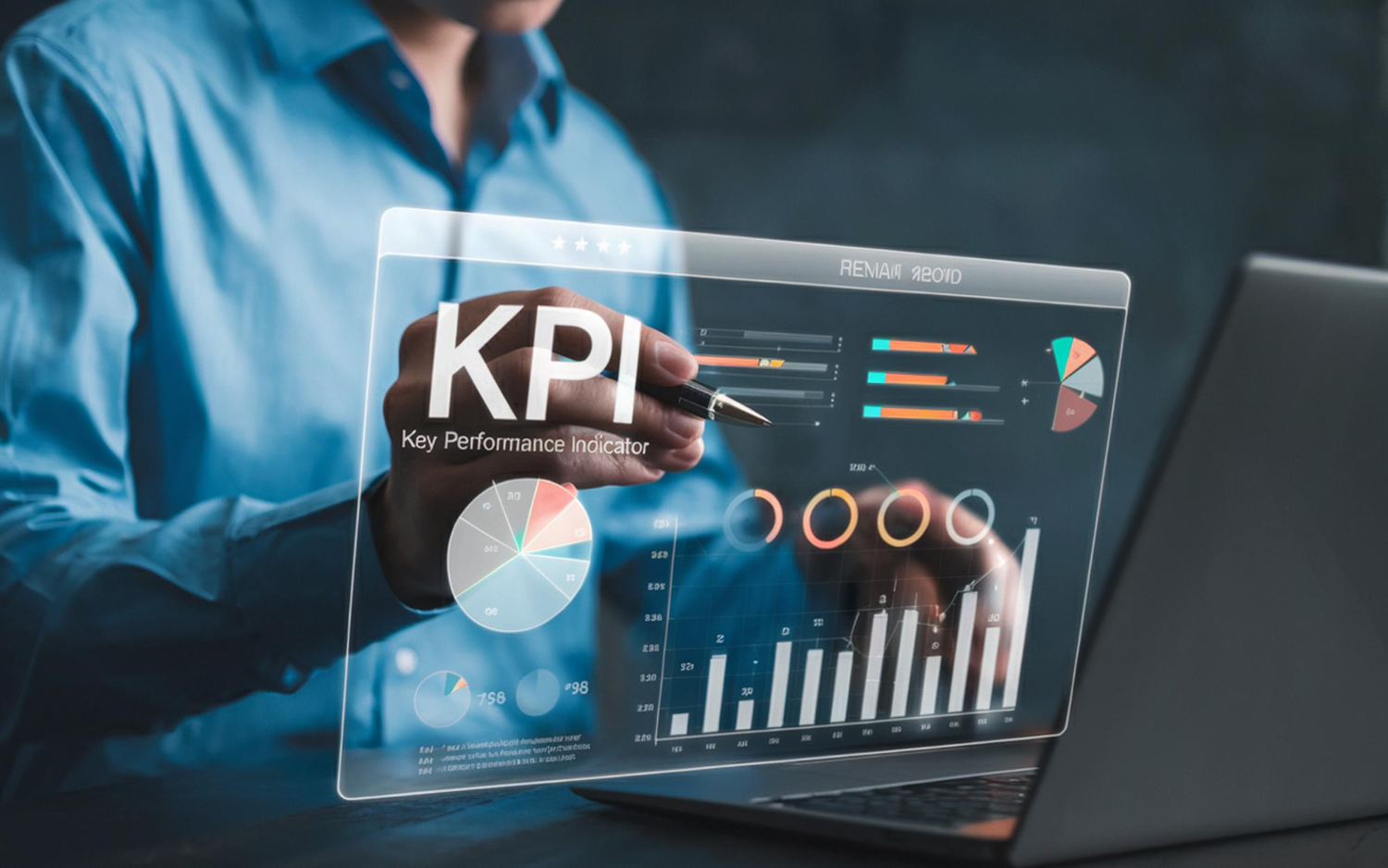Value-based pricing: understanding and implementing this strategy
Value-based pricing transforms how companies set their prices. This strategic approach determines rates not based on production costs, but according to the value clients perceive. Companies that master this method significantly increase their margins while strengthening their premium positioning. Discover how to implement this pricing strategy and maximize your offerings' value in your market.
- Core principle: Value-based pricing aligns product or service prices with the tangible benefits (time savings, cost reductions, increased productivity) delivered to clients, distinguishing itself from cost-based pricing.
- Strategic advantages: This method maximizes margins and profitability, strengthens premium market positioning, and significantly improves client relationships by focusing on delivered value.
- 5-step implementation: Successful application involves analyzing perceived value by client segment, identifying differentiation points, quantifying client benefits, structuring an adapted pricing grid, and continuous testing and adjustments.
- Calculation and communication: It's crucial to assess tangible and intangible benefits, calculate ROI for clients, and structure sales proposals that clearly demonstrate value to justify pricing.
The fundamentals of value-based pricing
The value-based pricing concept
Value-based pricing represents a radical shift in price setting. This method relies on a fundamental principle: the optimal price for a product or service corresponds to what your client is willing to pay based on the tangible benefits they receive.
Take the example of B2B project management software. Its value doesn't lie in development costs, but in its ability to save teams time, reduce errors, and improve productivity. A 20% efficiency gain can justify a higher price if the return on investment is demonstrated.
This approach requires deep understanding of your clients' needs and business challenges. Price then becomes a reflection of value created rather than a simple cost addition.
Differences from cost-based pricing
The traditional cost-based pricing method simply adds production costs with a fixed margin. This mathematical approach doesn't reflect the real value delivered to clients. A telling example: a consulting firm that only bills for time spent misses the opportunity to capitalize on the business impact generated for clients.
Value-based pricing transforms this logic by first evaluating what clients gain through your solution. A company offering HR automation systems can bill based on savings realized by clients rather than development costs.
This fundamental distinction allows better alignment of your pricing with results obtained by your clients.
The importance of client perception
Client perception represents the determining factor in a value-based pricing strategy. High-performance industrial equipment won't sell at its fair value if buyers don't clearly perceive its measurable advantages on their productivity.
A technology company transformed its market perception by quantifying its solution's impact: for every dollar invested, clients save $4.50 in operational costs. This tangible demonstration enabled a 30% price increase while maintaining growth.
The key lies in aligning your pricing with value perceived by your market segments. A machine tool manufacturer customizes offers by sector: pricing based on energy savings for industry, waste reduction for food processing.
Strategic advantages for your company
Maximizing margins and profitability
Adopting value-based pricing generates remarkable financial results. Recent analysis shows that a manufacturing company multiplied its gross margin by 2.5 in 12 months after basing prices on value created for clients.
The key lies in precisely identifying generated gains. An industrial equipment distributor mapped savings realized by clients: reduced downtime, lower maintenance costs, increased equipment lifespan. This approach allowed a 45% price increase on certain strategic product lines.
Companies mastering this method see an average 18% profitability increase in the first year. This result stems from their ability to fully monetize their solutions' added value.
Strengthening premium positioning
Value-based pricing enables building solid, lasting premium positioning. A logistics solutions company transformed its image by developing custom services adapted to specific constraints of each industry sector.
Perceived value extends beyond the product itself. An industrial equipment manufacturer now offers certified expert training and personalized support, reinforcing its status as an indispensable market expert.
Brands adopting this approach distinguish themselves through their ability to create unique experiences. A B2B software publisher implemented an operational excellence program, including strategic workshops and dedicated follow-up, consolidating its position as a strategic partner rather than simple vendor.
Improving client relationships
Value-based pricing fundamentally transforms client interactions. This approach establishes proactive collaboration based on mutual understanding of business objectives.
Regular measurement of achieved results reinforces trust: 82% of companies practicing this method see significant increases in renewal rates. Constructive dialogue naturally develops around performance indicators.
Commercial exchanges evolve toward interest alignment. Instead of negotiating solely on price, discussions focus on creating added value and achieving common objectives. This positive dynamic favors lasting partnerships where both parties benefit.
5 steps to implement this method
Analyze perceived value by client segment
Rigorous analysis of perceived value begins with strategic market segmentation. An industrial equipment manufacturer revolutionized its approach by mapping specific expectations of each sector: pure performance for automotive, reliability for aerospace.
Using qualitative interviews and quantitative data identifies priority value criteria. An IT services company discovered that banking sector clients valued security at 70%, while retail clients prioritized deployment speed.
Establish a matrix crossing segments and value attributes for each offering. An HR software publisher identified that ease of use represented a key factor for SMEs, while large corporations sought advanced customization.
Identify differentiation points
Successful value-based pricing strategy relies on your ability to highlight unique competitive advantages. A cloud solutions company developed a comparative evaluation grid analyzing 15 key criteria, revealing its cybersecurity strengths.
Thorough market analysis establishes a solid foundation for determining distinctive assets. An industrial components manufacturer conducted a 24-month comparative study, documenting superior performance in durability and thermal resistance.
Technical characteristics aren't enough. An HR software publisher built differentiation on personalized support and continuous training, creating a distinctive client experience versus competitors' standardized solutions.
Quantify client benefits
Precise measurement of financial gains transforms commercial arguments into convincing figures. A structured methodology calculates realized savings: operational cost reduction, productivity gains, revenue increases.
Benefits are measured across multiple dimensions. Direct ROI includes time and resource savings. Indirect impacts encompass improved client satisfaction or operational risk reduction.
Here are essential metrics to monitor:
- Cost reduction: lower direct and indirect expenses
- Productivity gains: increased output per employee
- Business impact: generated revenue growth
Creating a personalized dashboard tracks these key indicators and adjusts pricing strategy based on achieved results.
Structure your pricing grid
Building successful pricing architecture relies on a methodical approach. Start by establishing a reference price based on value delivered for each market segment. A consulting firm transformed its model by creating packages adapted to specific SME and enterprise challenges.
Adopt progressive logic in your price levels. An IT services company offers three tiers: standard for essential features, professional with advanced options, and enterprise including personalized support.
Pricing flexibility plays a central role. A software publisher implemented a modular system where each client selects only relevant features for their activity, optimizing value-price perception.
Test and adjust your model
Implementing a testing protocol ensures pricing strategy effectiveness. Start by selecting a representative client sample to experiment with different price structures over 3-6 months.
An industrial equipment manufacturer conducted A/B tests on two distinct segments. The first group received fixed pricing, the second value-based pricing on generated savings. Results revealed a 25% conversion rate increase with the second approach.
Systematically measure key indicators: conversion rates, average order value, and client satisfaction. Analyze qualitative feedback from sales teams to refine your model. This data-driven approach continuously optimizes your value-based pricing strategy.
Sectors excelling in value-based pricing
The B2B SaaS market
The B2B SaaS sector represents particularly fertile ground for value-based pricing. Professional software publishers demonstrate remarkable ability to align rates with value generated for clients.
A major CRM player revolutionized its pricing model by calculating price per converted sales opportunity rather than per user. This innovative approach doubled average revenue per account over 12 months.
Cloud solution flexibility enables fine-tuning prices according to actual usage and business impact. A marketing automation platform now bills services based on qualified leads generated, creating perfect alignment between cost and client benefit.
Consulting and professional services
The professional consulting sector distinguishes itself through unique value-based pricing methodology. Innovative firms structure fees around measurable results: operational performance improvement, cost reduction, or revenue growth.
A digital transformation consulting firm implemented modular pricing based on change magnitude realized. High strategic impact projects benefit from premium pricing, while standard missions follow more traditional structure.
Value measurement relies on precise performance indicators: new practice adoption rates, productivity gains, or generated savings. This approach reinforces consulting credibility while ensuring perfect alignment between fees and achieved results.
Technology solutions
The technology infrastructure sector excels in value-based pricing application through its strong innovation component. Network equipment manufacturers set rates according to measurable performance gains: latency reduction, bandwidth improvement, or energy optimization.
A server manufacturer customizes pricing based on scale economies realized by clients in their data centers. This approach capitalizes on every saved watt and guaranteed availability hour.
Performance monetization makes perfect sense in this sector. Cloud infrastructure providers adapt pricing grids according to delivered computing power and system resilience, creating direct correlation between price and technical value.
How to calculate client-perceived value
Quantitative evaluation methods
The Van Westendorp method establishes initial quantified estimates of perceived value. This technique relies on four strategic questions to determine optimal price ranges according to market segments.
Conjoint analysis represents another robust approach. It breaks down your offering into measurable attributes and reveals each characteristic's contribution to overall perceived value.
An industrial machinery expert uses a multi-criteria scoring matrix: technical performance (35%), lifespan (25%), operating costs (25%), and after-sales service (15%). This objective weighting transforms qualitative data into quantifiable indicators.
Analyzing tangible and intangible benefits
Precise benefit evaluation requires clear distinction between two categories. Tangible benefits are directly measurable: operational cost reduction, revenue increases, or productivity gains. A cloud services company quantified a 30% reduction in technical incidents for clients.
Intangible benefits create less visible but strategic value: brand image improvement, employee satisfaction, or partner confidence. An HR consulting firm quantifies talent retention through satisfaction surveys and engagement indicators.
Combining these dimensions strengthens commercial arguments. A marketing software publisher associates performance metrics (generated leads, conversion rates) with client testimonials detailing cultural impact.
The client ROI formula
Client ROI formula calculates by dividing generated gains by initial investment: ROI = (Benefits - Costs) / Costs × 100. For HR software billed at $50,000 generating $200,000 in annual savings, ROI reaches 300%.
This metric transforms commercial arguments into compelling figures. A personalized tracking dashboard monitors key indicators: operational cost reduction, productivity gains, revenue increases.
Regular metric updates reinforce commercial credibility. Quarterly results analysis validates real solution impact and justifies pricing positioning.
Common mistakes to avoid
Underestimating delivered value
Value underestimation represents a major trap many B2B companies fall into. A recent study reveals that 68% of technology companies set prices 30% below value actually delivered to clients.
An industrial automation solutions manufacturer discovered it under-billed services by 45% by ignoring productivity gains generated at client sites. Correcting this error increased margins without losing competitiveness.
The solution involves thorough analysis of distinctive advantages. Systematically document client successes, measure real solution impact, and build objective value creation evaluation grids.
Neglecting client segmentation
Approximate segmentation compromises value-based pricing effectiveness. Companies applying uniform approaches to all clients miss numerous value creation opportunities.
A logistics solutions manufacturer saw 25% conversion drops after proposing identical service levels to all prospects, without considering sector-specific requirements.
Success requires thorough analysis of each segment's specific needs. Observe purchase criteria, measure price sensitivity, and identify particular service expectations. A software publisher doubled transformation rates by adapting offerings to distinct needs of industrial SMEs and distribution corporations.
Lacking concrete data
Insufficient data collection represents a major obstacle in value-based pricing application. A consulting firm saw margins drop 40% for lack of precisely documenting intervention impact on client performance.
Implementing structured measurement systems radically transforms approach. Analytical dashboards track essential metrics: time saved, savings realized, revenue increases.
Tools like client satisfaction surveys, regular qualitative interviews, and usage data analysis provide solid foundations for price justification. An IT services company doubled revenue by establishing detailed monthly reporting of avoided incidents and saved downtime.
Tools to optimize your strategy
Pricing automation solutions
Price automation tools transform B2B pricing through advanced algorithms. These solutions analyze purchase behaviors in real-time and automatically adjust prices according to value perceived by each client segment.
Modern technology enables sophisticated pricing recommendation personalization. An artificial intelligence module evaluates each prospect's willingness to pay and suggests optimal pricing based on multiple criteria: purchase history, industry sector, transaction volume.
These platforms also facilitate price validation by sales teams. Automated workflows accelerate approval processes while maintaining rigorous pricing strategy control.
Value analysis software
Modern analysis tools transform raw data into strategic insights for pricing policy. These solutions precisely quantify perceived value through dynamic dashboards and personalized reports.
Companies can now measure each offering component's impact through advanced segmentation and predictive modeling features. An industrial solutions manufacturer increased margins by 35% by identifying characteristics most valued by clients.
These platforms integrate comparative evaluation modules that quickly reveal pricing optimization opportunities. Intuitive data visualization facilitates decision-making and reinforces sales team adherence to new pricing strategies.
Commercial management platforms
Modern commercial management solutions revolutionize how teams structure offerings. Intelligent configuration modules standardize proposal presentation while maintaining personalization adapted to each prospect.
Commercial data centralization in unified spaces transforms opportunity tracking. Sales representatives instantly access client histories, validated document templates, and best-converting arguments.
Comparative performance tables by offering type help quickly identify most effective proposals. Teams can then reproduce best practices and maximize transformation rates across each market segment.
How to present value in your offerings
Structuring a winning sales proposal
Building an impactful sales proposal begins with a captivating executive summary that synthesizes your understanding of prospect challenges. This hook often determines attention given to the document's remainder.
Adopt a funnel structure: start from global context to progressively zoom into specific recommendations. Each section should naturally lead to the next, creating logical flow toward your offering.
Personalized visuals significantly reinforce message impact. A graph illustrating potential gains or explanatory methodology diagram speaks louder than lengthy discourse. The objective remains demonstrating expertise while facilitating reading for decision-makers.
Demonstrating ROI convincingly
ROI presentation relies on concrete calculations that speak to decision-makers. An IT services company transformed its pitch by precisely quantifying gains: 30% operational cost reduction, 25% productivity increase.
Industry metrics reinforce demonstration credibility. Comparative tables parallel prospect's current situation with average results obtained by your clients in their market.
Temporal evolution graphs materialize ROI progression month by month. Visual representation of cumulative 12-month gains transforms abstract data into tangible financial projections, facilitating executive decision-making.
Communicating benefits effectively
Benefit formulation requires strategic narration resonating with prospect concerns. Concrete language focused on operational results advantageously replaces technical jargon.
Storytelling art transforms raw data into impactful narratives. A cybersecurity company tells how clients sleep peacefully thanks to enhanced protection, rather than listing technical features.
Client testimonial validation reinforces argument credibility. Exact words from satisfied clients naturally carry your message. Precise vocabulary centered on business gains helps prospects envision their future success.
Message personalization according to decision-maker profile optimizes reception. A CFO will be sensitive to realized savings, while a CTO will appreciate solution robustness.
FAQ
What's the main difference between value-based pricing and cost-based pricing?
Cost-based adds costs and margin. Value-based sets prices on client-perceived value and benefits they receive.
How can we determine a client's "perceived value"?
Through segmentation, client interviews, analyzing their gains (ROI, productivity) and specific evaluation methods like Van Westendorp.
Value-based pricing: understanding and implementing this strategy
It's particularly effective for B2B offerings, innovative or differentiated solutions where delivered value is significant and can be clearly demonstrated.
Turn opportunities into wins
With Cuevr, close more and faster
Cuevr helps you organize your thoughts and maximize every detail to persuade prospects more effectively and accelerate closing.
Precise, impactful proposals aligned with your goals.
Smart Builder, AI scoring, detailed tracking, and actionable recommendations to guide every step from qualification to closing.
Accelerate your sales cycles, Reduce ghosting, Improve your close rate, Enhance the quality and impact of your proposals
.avif)


.avif)


